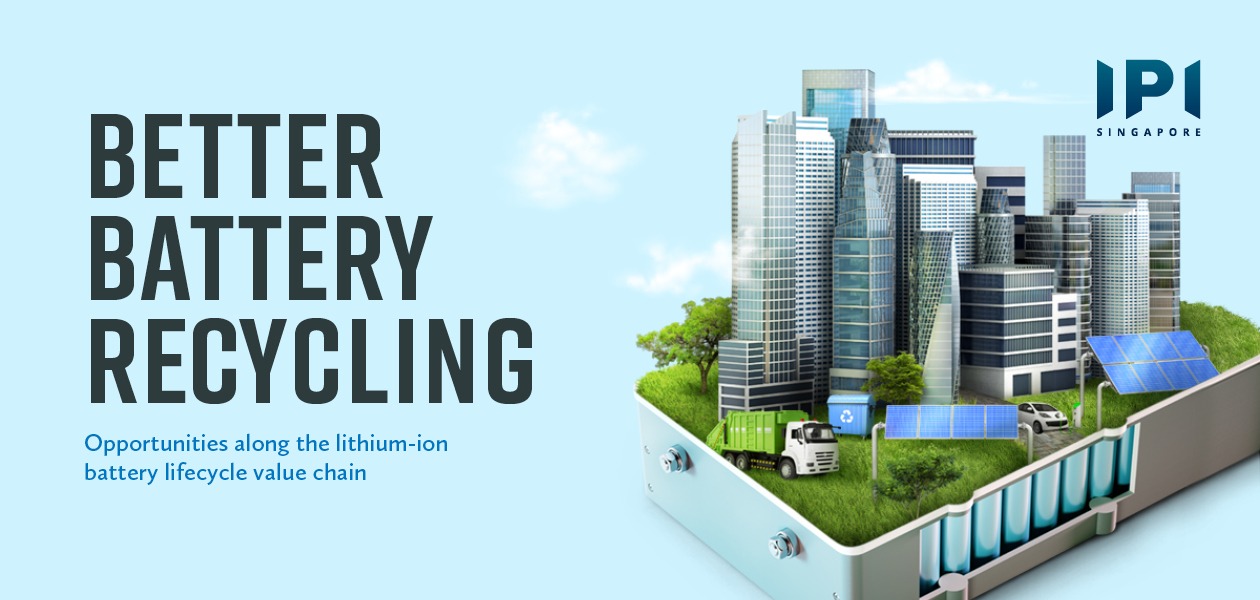Lithium-ion battery recycling: opportunities and challenges
Lithium-ion battery recycling could help to address the need for more raw materials while keeping toxic battery waste out of landfills. Download our white paper to find out more.
In the decades since lithium-ion batteries (LIBs) were first invented, they have become indispensable to modern life. Without a compact source of power, we would not have the laptops and mobile phones we have come to take for granted; neither would we be able to embrace transformative new technologies like electric vehicles and renewable energy. LIBs are such a significant technological breakthrough that three people involved in their discovery were awarded this year’s Nobel Prize in Chemistry.
But for all the good that LIBs have done, their immense popularity also poses a serious problem: what do we do with them once they reach the end of their useful lifespan? LIBs cannot be treated like normal waste; they are dangerously flammable and could leach toxic chemicals into the environment. Furthermore, the demand for LIBs is driving up the cost of raw materials like lithium and cobalt, both of which can be environmentally damaging to mine.
With the right technology, LIB recycling can address both these issues. First of all, recycling spent LIBs keeps them—and the hazardous materials they contain—out of the landfills. Secondly, by closing the loop, LIB recycling becomes a valuable source of new battery-grade material that can help meet the growing demand for new batteries.
But LIB recycling rates, particularly outside of China, remain very low. To get an insight on the key challenges standing in the way of a LIB recycling revolution, as well as opportunities where technology can make the biggest impact, technology managers at IPI have conducted a technology landscape study, publishing their findings today in a white paper titled Better Battery Recycling.
Key players and their patents
While battery recycling companies such as Jiangxi Green Eco Manufacturing Resource (GEM) and Hunan Brunp Recycling are understandably interested in developing LIB recycling technologies, our study of LIB recycling-related patents has revealed that it is a topic of intense interest for players along the entire battery manufacturing value chain.
Closer to the end users, automotive original equipment manufacturers like Chery Automobile are interested in LIB recycling as a means of responding to regulatory demands to be accountable for the batteries sold to their customers. At the other end of the value chain, raw material miners and battery material suppliers like Glencore and Tianqi Lithium are among the top LIB recycling patent holders, highlighting how spent LIBs are increasingly being seen as a valuable source of battery raw materials.
Furthermore, battery material miners have an additional incentive to conduct research and development on LIB recycling: their existing technologies for mechanical separation using gravity or froth flotation are particularly suitable for adapting to recycling processes. Therefore, while the mining industry might seem an unexpected participant in the LIB recycling market at first glance, there are considerable opportunities to be reaped in the overlap.
Chemistries and their challenges
While they are collectively called lithium-ion batteries, LIBs are typically made of lithium in a composite with other metals, most frequently cobalt and nickel. Each type of battery, from lithium cobalt oxide (LCO) to lithium nickel manganese cobalt (NMC), has its own strengths and weaknesses, and importantly for LIB recyclers, recycling processes.
This diversity makes it challenging for a recycling plant receiving different forms of batteries, all in different conditions. Reflecting this need, the majority of the patents in the LIB recycling space are focused on pre-processing and pre-treatment technologies, upstream processes that are common to all subsequent downstream approaches.
Once the batteries have been pre-processed and treated, the two main methods to recover valuable metals are pyrometallurgy, which relies on high heat, and hydrometallurgy, which uses chemicals. Patents in this area are focused on achieving high metal recovery rates at low temperatures, and increasingly involve hybrid approaches combining both pyrometallurgy and hydrometallurgy.
Be part of the LIB recycling revolution
With the continued popularity of consumer electronics and the growth of the electric vehicle market and renewable energy sector, the global demand for LIBs is here to stay. To find out more about the technologies transforming LIB recycling and how you could be part of it, download the white paper here.
In addition to the white paper, the full technology landscape report on lithium-ion battery recycling is available for purchase.
For more information, please contact [email protected]

